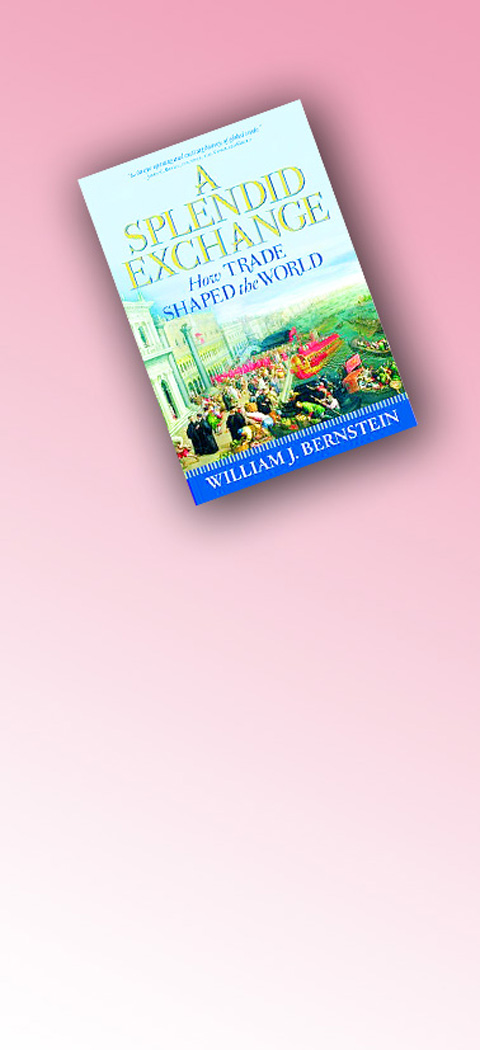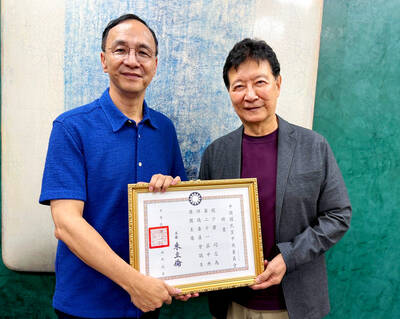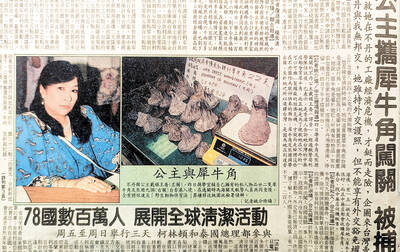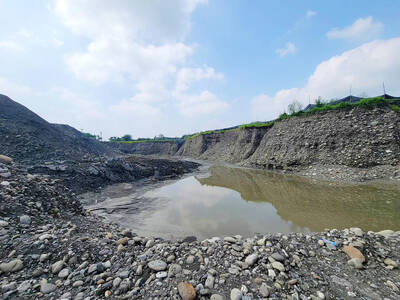In 2006 the world’s countries exported US$11.8 trillion in goods and services, far above the gross domestic product of any single country except the US, which itself exported over US$1 trillion worth. World trade has nearly doubled in less than a decade, and its increase since World War II is simply staggering.
The world is knit together as never before with a cat’s cradle of trade, which has already had immense consequences and will have many more. But while global trade has been much in the news lately, especially during this election year, it has an extremely long history. As William Bernstein makes clear in his entertaining and greatly enlightening book A Splendid Exchange, it has been a major force in driving the whole history of humankind.
Adam Smith explained in The Wealth of Nations that humans, and humans alone, are endowed with “a propensity to truck, barter and exchange one thing for another.” Equally important, skills and talents are not evenly distributed across the human landscape, nor are the world’s resources equally distributed across the natural one. Since humans also have a propensity to bash in one another’s skulls, we have always traded for what we wanted or raided for it. Bernstein’s book is a history of the first option, a refreshing view, to say the least.

Ancient Mesopotamia was richly endowed with fertile soils and water from the Tigris and Euphrates rivers, but it lacked stone and wood for building, and metals like copper for tools and weapons. The Sumerians, however, had surplus food to trade, so they could bargain for stone from near the headwaters of the rivers, wood from what is now Lebanon and metal from Sinai, Cyprus and elsewhere.
The scope of ancient trade was immense. A single Bronze Age shipwreck around 1350 BC near Bodrum, a Turkish coastal town, yielded no less than 9 tonnes of copper and a tonne of tin ingots along with other merchandise like ivory. (The ideal ratio of copper to tin for making bronze is 10-to-1.)
By Roman times vast armadas ferried Egyptian grain, Greek wine, Spanish copper and silver, and a hundred other commodities around the Mediterranean. India has yielded rich troves of Roman coins that reached that subcontinent to pay for spices the Romans coveted, especially pepper. Chinese silk — literally worth its weight in gold — traveled through the heart of Asia on the Silk Road to reach markets in the West.
As the West collapsed at the end of antiquity, so did its long-distance trade. Few Roman coins dating later than AD 180 are found in India, as the Roman economy began to run out of gold and silver. The Arabs came to dominate the major trade routes of the Indian Ocean after the rise of Islam. And as Western Europe revived economically, a lively trade developed between rising powers in Venice and the Middle East. (Venice supplied slaves from the Crimea and Caucasus in exchange for spices and sugar.)
When the Ottoman conquest of Constantinople slammed shut the sea route to the Crimea, Europe began seeking other routes to reach the resources of the East and eliminate the middleman. Columbus sailed west in 1492 and stumbled onto the New World. Vasco da Gama reached India in 1498, having rounded the southern tip of Africa. The modern world began, thanks to trade.
The history of global trade is so long and so vast that Bernstein could have easily produced a toe-breaker of a book. Happily he has not. By treating many aspects thematically rather than strictly chronologically, he shows in fewer than 400 pages of readable type how people and nations have faced the same problems over and over and often solved them the same way.
The poor soil and scant rain of ancient Greece, for instance, meant that the terrain’s ability to grow grain was limited, but grapevines and olive trees grew in abundance. To export its wine and olive oil, Athens developed a pottery industry to supply the jars in which those products were transported. As Greek trade, and colonies, flourished across the length and breadth of the Mediterranean and the Black Sea, naval power was needed to suppress piracy. To control choke points like the Dardanelles and Bosporus, which led to the rich grain lands of what is now Ukraine, the Athenian empire developed.
This succession of trade, colonies, naval power and empire repeated itself with the Venetians and Genoese, the Portuguese, the Dutch and the British. Even the strategic bottlenecks have stayed the same: Suez; the Strait of Hormuz leading to the Persian Gulf; the Strait of Malacca leading to East Asia; the Bosporus and Dardanelles. Only now, instead of slaves and spices flowing through them, it is oil.
Bernstein is a fine writer and knows how to tell a great story well. And he has many in this book, from Francis Drake’s voyage around the world (which repaid its backers, including Queen Elizabeth I, 50 pounds for every 1 invested) to the Black Death that remorselessly followed the trade routes as it worked its devastating way through Europe and the Middle East. But he never loses sight of his overall goal: to show how trade shaped the world in the past and will shape the world in the future, whether we like it or not.

Next week, candidates will officially register to run for chair of the Chinese Nationalist Party (KMT). By the end of Friday, we will know who has registered for the Oct. 18 election. The number of declared candidates has been fluctuating daily. Some candidates registering may be disqualified, so the final list may be in flux for weeks. The list of likely candidates ranges from deep blue to deeper blue to deepest blue, bordering on red (pro-Chinese Communist Party, CCP). Unless current Chairman Eric Chu (朱立倫) can be convinced to run for re-election, the party looks likely to shift towards more hardline

Sept. 15 to Sept. 21 A Bhutanese princess caught at Taoyuan Airport with 22 rhino horns — worth about NT$31 million today — might have been just another curious front-page story. But the Sept. 17, 1993 incident came at a sensitive moment. Taiwan, dubbed “Die-wan” by the British conservationist group Environmental Investigation Agency (EIA), was under international fire for being a major hub for rhino horn. Just 10 days earlier, US secretary of the interior Bruce Babbitt had recommended sanctions against Taiwan for its “failure to end its participation in rhinoceros horn trade.” Even though Taiwan had restricted imports since 1985 and enacted

Enter the Dragon 13 will bring Taiwan’s first taste of Dirty Boxing Sunday at Taipei Gymnasium, one highlight of a mixed-rules card blending new formats with traditional MMA. The undercard starts at 10:30am, with the main card beginning at 4pm. Tickets are NT$1,200. Dirty Boxing is a US-born ruleset popularized by fighters Mike Perry and Jon Jones as an alternative to boxing. The format has gained traction overseas, with its inaugural championship streamed free to millions on YouTube, Facebook and Instagram. Taiwan’s version allows punches and elbows with clinch striking, but bans kicks, knees and takedowns. The rules are stricter than the

Last week the story of the giant illegal crater dug in Kaohsiung’s Meinong District (美濃) emerged into the public consciousness. The site was used for sand and gravel extraction, and then filled with construction waste. Locals referred to it sardonically as the “Meinong Grand Canyon,” according to media reports, because it was 2 hectares in length and 10 meters deep. The land involved included both state-owned and local farm land. Local media said that the site had generated NT$300 million in profits, against fines of a few million and the loss of some excavators. OFFICIAL CORRUPTION? The site had been seized